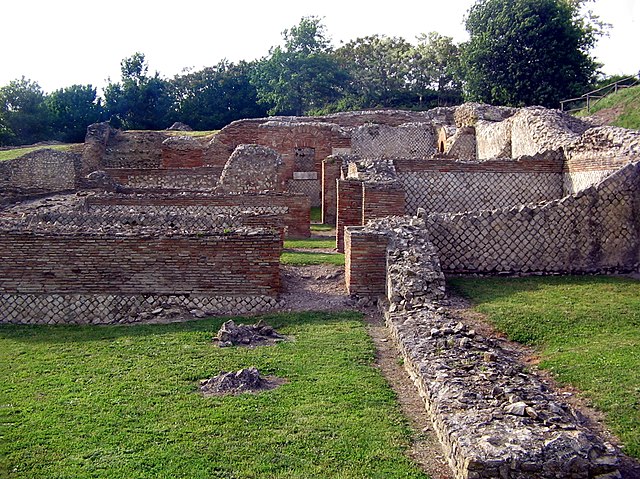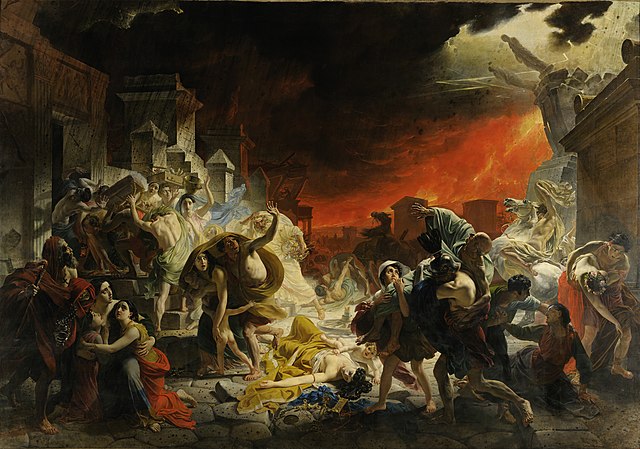Benevento is a city and comune of Campania, Italy, capital of the province of Benevento, 50 kilometres (31 mi) northeast of Naples. It is situated on a hill 130 metres above sea level at the confluence of the Calore Irpino and the Sabato. In 2020, Benevento has 58,418 inhabitants. It is also the seat of a Catholic archbishop.
Main landmarks in Benevento. Clockwise from the upper left: the Arch of Trajan, the church of Santa Sofia, the Cathedral's main portal, the castle and the Roman theatre
View of the Roman Theatre of Benevento.
Panoramic view of Benevento from the mount Pentime, part of the Taburno Camposauro
The Arch of Trajan, provided with a portcullis, as it appeared in the 18th century, etching by Giovanni Battista Piranesi. Some of the bas-reliefs are now in the British Museum.
Campania is an administrative region of Italy; most of it is in the south-western portion of the Italian peninsula, but it also includes the small Phlegraean Islands and the island of Capri. The capital of the Campania region is Naples. As of 2018, the region had a population of around 5,820,000 people, making it Italy's third most populous region, and, with an area of 13,590 km2 (5,247 sq mi), its most densely populated region. Based on its GDP, Campania is also the most economically productive region in southern Italy and the 7th most productive in the whole country. Naples' urban area, which is in Campania, is the eighth most populous in the European Union. The region is home to 10 of the 58 UNESCO sites in Italy, including Pompeii and Herculaneum, the Royal Palace of Caserta, the Amalfi Coast, the Longobardian Church of Santa Sofia in Benevento and the Historic Centre of Naples. In addition, Campania's Mount Vesuvius is part of the UNESCO World Network of Biosphere Reserves.

Ancient Greek Temple of Hera, Paestum, built in the Doric order around 460–450 BC
Ruins of Aeclanum, a Roman town in Irpinia district
The Last Day of Pompeii – Karl Briullov
Early kings ruled from Castel Nuovo








